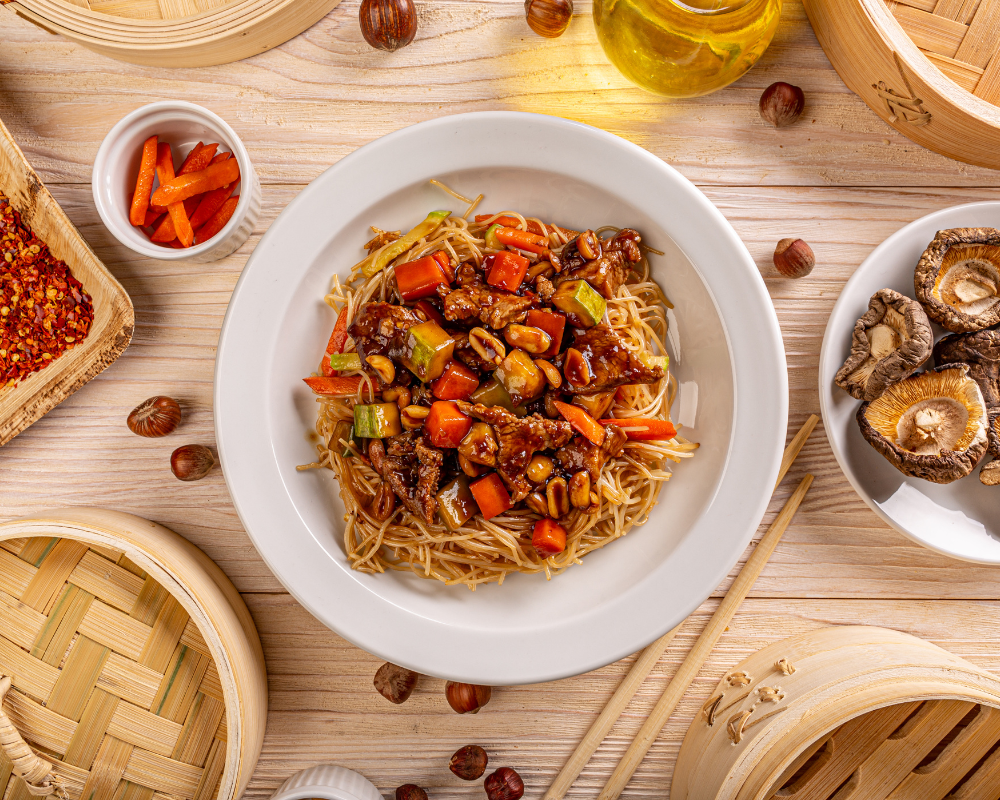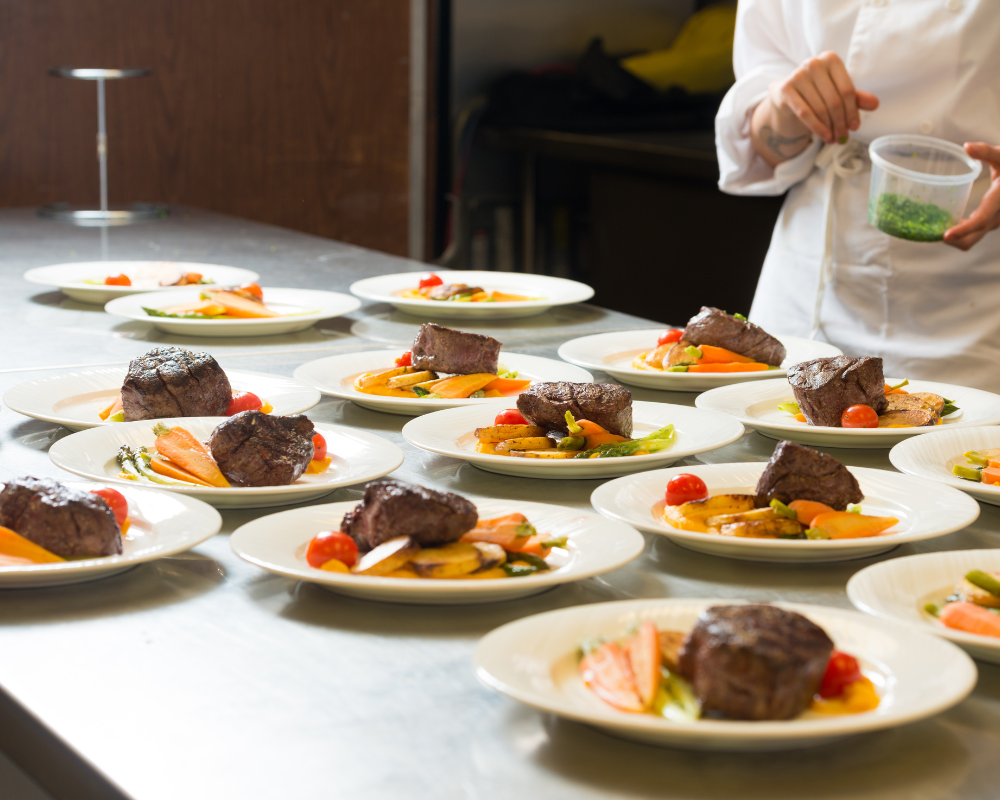Crafting the perfect event menu is an art form that balances taste, presentation, and guest satisfaction. Whether you’re planning a lavish wedding, a corporate gala, or an intimate gathering, the key to a memorable event often lies in its culinary offerings. This guide will unravel the secrets behind creating an impeccable menu, from understanding dietary preferences to choosing seasonal ingredients. Dive in to discover how to delight your guests’ palates and elevate your event to the next level.
Understanding Guest Preferences and Allergies
Creating a perfect event menu goes beyond selecting dishes that appeal to the palate—it’s about understanding the dietary needs and preferences of your guests. An inclusive menu considers not just the flavors but also the well-being of everyone attending. It’s crucial to gather information on any dietary restrictions, allergies, and preferences well in advance. This proactive approach ensures that every guest feels valued and accommodated, transforming a simple meal into a memorable dining experience.
One effective strategy is to include a section on the event invitation where guests can specify their dietary requirements. Whether it’s a vegetarian, vegan, or gluten-free diet, or allergies to nuts, dairy, or seafood, this information is invaluable. It allows the chef to craft a menu that’s not only delicious but also safe and enjoyable for all. Remember, the goal is to create an inclusive atmosphere where dietary restrictions are not seen as obstacles but as opportunities to showcase culinary creativity and thoughtfulness.
Moreover, it’s important to train the serving staff to be knowledgeable about the menu items, including ingredients and preparation methods. They should be equipped to answer questions and provide recommendations, ensuring guests with dietary restrictions can make informed choices. This level of attentiveness and care significantly enhances the dining experience, reinforcing the event’s success.
Additional Insights on Catering to Dietary Needs
Incorporating diverse dietary options isn’t just about avoiding allergens; it’s about celebrating the variety of dietary practices and preferences that guests bring to the table. By offering a range of dishes that cater to different needs, you demonstrate a deep respect for individual choices and promote a culture of inclusivity. This approach not only elevates the guest experience but also positions you as a thoughtful and considerate host or event planner.
- Survey guests about dietary restrictions during the RSVP process
- Collaborate with chefs to create balanced, inclusive menus
- Label dishes clearly at the event to avoid confusion
- Offer a variety of dishes to ensure there is something for everyone
- Keep a list of ingredients handy for guests who may have questions
Balancing Flavors and Textures
Creating the perfect event menu transcends mere recipe selection; it involves a meticulous orchestration of flavors and textures to produce a symphony on the palate. The magic lies in achieving a harmonious balance that caters to diverse tastes while ensuring each dish stands out as a unique experience. To accomplish this, chefs must consider the interplay between the five basic tastes: sweet, salty, sour, bitter, and umami, ensuring that no single flavor overwhelms the others.
Texture plays a pivotal role in how we experience food. It can transform a dish from mundane to memorable. The contrast between crunchy and creamy, or soft and crisp, adds depth and interest to the dining experience. When planning a menu, it is essential to incorporate a variety of textures that complement each other, enhancing the overall enjoyment of the meal. For instance, a smooth, velvety soup paired with a rustic, crusty bread offers a satisfying combination of textures that elevates the dish.
Moreover, the sequence in which dishes are served also affects the balance of flavors and textures. Starting with lighter, more delicate flavors and textures, and gradually moving towards more robust and complex ones can create a satisfying progression for the palate. This thoughtful arrangement ensures that each course shines and maintains the guests’ interest throughout the meal.
Further Insights on Balancing Flavors and Textures
Understanding the science behind how flavors and textures interact can significantly enhance the dining experience. For example, a dish with a high fat content can be balanced with a touch of acidity, cutting through the richness and refreshing the palate. Similarly, the inclusion of a crunchy element in a predominantly soft dish can provide a much-needed contrast that heightens the sensory experience of the meal. This careful consideration in menu planning is what turns a good meal into an unforgettable culinary journey.
Seasonal and Local Ingredient Selection
Creating the perfect event menu goes beyond just picking dishes that sound appealing; it involves a deep dive into the seasonality and locality of ingredients. By prioritizing ingredients that are in season and sourced locally, chefs can ensure not only the freshness but also the sustainability of the dishes they create. This approach not only supports local farmers and reduces the carbon footprint associated with long-distance food transportation but also provides guests with a unique dining experience that reflects the local culture and terroir.
Choosing seasonal and local ingredients also means menus can be more adaptable and innovative. Chefs are challenged to think creatively, crafting dishes that highlight the best of what’s available. This often leads to a more engaging and memorable dining experience, as guests are presented with flavors at their peak. Furthermore, these ingredients tend to be of higher quality, offering bolder flavors and better nutrition, which can significantly enhance the overall dining experience.
Integrating seasonal and local ingredients into an event menu not only showcases a commitment to quality and sustainability but also tells a story. Each dish becomes a narrative of the locality, season, and the chef’s relationship with the food. This approach transforms dining from a mere act of eating into an immersive experience that connects guests with the local environment and community.

Benefits of Seasonal and Local Ingredient Selection
- Enhances freshness and flavor of dishes.
- Supports local farmers and economies.
- Reduces environmental impact.
- Encourages culinary creativity and innovation.
- Offers guests a unique and memorable dining experience.
Menu Structuring for Event Flow
Creating the perfect event menu goes beyond choosing delicious dishes; it entails designing a culinary journey that complements the event’s flow, enhancing guests’ overall experience. A well-structured menu can set the pace of the event, encouraging mingling and conversation, or facilitating a formal, timed program. The goal is to ensure that each course seamlessly transitions into the next, maintaining the event’s momentum and keeping guests engaged.
The first step in structuring your menu is to consider the type of event you’re hosting. A gala dinner, for example, will require a different approach compared to a casual networking event. For formal gatherings, a multi-course meal with a palate cleanser might be appropriate, ensuring a paced dining experience that aligns with speeches or presentations. In contrast, for more laid-back events, opting for shared platters or buffet stations encourages guests to interact and move around, fostering a dynamic atmosphere.
Another critical aspect is aligning your menu with the event’s timing. Serving a light appetizer during a cocktail hour allows guests to socialize without committing to a full meal immediately. This can be followed by the main course, ideally designed to be both satisfying and invigorating, preventing any lull in the event’s energy. Finally, a carefully chosen dessert can serve as a memorable closing, ideally paired with coffee or tea to rejuvenate guests before their departure.
Optimizing Menu Choices for Guest Engagement
When finalizing your menu, it’s essential to consider dietary restrictions and preferences to ensure inclusivity. Offering a variety of dishes that cater to different needs not only demonstrates thoughtfulness but also maximizes guest satisfaction. Additionally, incorporating interactive elements, such as live cooking stations or personalized dish selections, can further enhance the dining experience, making your event a talked-about occasion.
| Course | Suggested Time | Interaction Level |
|---|---|---|
| Appetizers | Beginning | High |
| Main Course | Mid-Event | Medium |
| Palate Cleanser | Between Courses | Low |
| Dessert | End | High |
| Coffee/Tea | End | Medium |
Presentation and Aesthetic Considerations
The visual appeal of a dish plays a crucial role in crafting memorable dining experiences. Presentation and aesthetic considerations are not merely about the superficial look of the dish but about telling a story that complements the flavor and ignites the diner’s senses. The arrangement on the plate, the choice of colors, and the contrast of textures all contribute to this narrative. An expertly presented dish speaks volumes about the care and thought put into its creation, setting the stage for the culinary journey ahead.
Firstly, the presentation of a dish is an art form in itself, requiring a keen eye for balance and proportion. Chefs must consider how each component of the dish is placed on the plate, aiming for a layout that is both aesthetically pleasing and functional for eating. The use of white space, or negative space, around the food can highlight its features and make the dish look more inviting. Secondly, the color palette of a dish can significantly affect its appeal. Vibrant colors are often more enticing, suggesting freshness and flavor. Chefs can achieve this by incorporating a variety of ingredients with different hues and shades, creating a visually stimulating plate that promises an exciting taste experience. Lastly, texture plays a subtle yet powerful role in presentation. A mix of textures not only adds depth to the visual appeal but also enhances the eating experience, offering a combination of sensations that keep the palate engaged.
Understanding the importance of presentation and aesthetics in menu creation is essential for any event planner or chef aiming to deliver unforgettable dining experiences. It’s not just about making food look good; it’s about crafting a visual and sensory prelude to the flavors the dish holds. This holistic approach to menu design ensures that every aspect of the meal is harmonious, leaving a lasting impression on guests.
| Element | Importance | Tips |
|---|---|---|
| Presentation | Creates the first impression | Use white space effectively, balance components |
| Color | Enhances visual appeal | Incorporate a variety of hues and shades |
| Texture | Adds depth and contrast | Mix smooth and crunchy elements |
| Theme | Unifies the dish with the event | Match dish elements with event colors or themes |
| Edibility | Ensures the dish can be comfortably eaten | Consider the practicality of eating the presentation |
In conclusion, the art of presenting a menu item extends far beyond the mere act of plating. It encompasses a deep understanding of how visual elements can enhance or detract from the dining experience. By considering presentation and aesthetic elements in menu design, chefs and event planners can elevate an event from simply serving food to creating an immersive sensory journey. Remember, the goal is to entice the eyes, excite the palate, and leave an indelible mark on the memory of each guest. Crafting a menu with careful attention to presentation and aesthetics is key to achieving this lofty goal.

